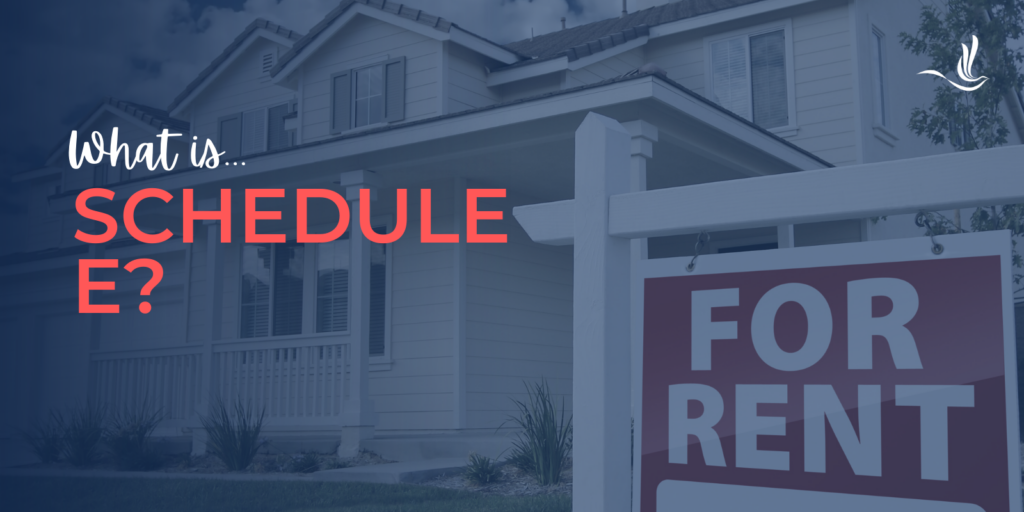
Taxes are difficult to understand as they are. Adding in the complexities of tax forms can add to the confusion, especially when it comes to reporting rental income and expenses. Schedule E is an essential form for property owners and investors who need to report income and losses from rental real estate, royalties, partnerships, S corporations, estates, trusts, and residual interests in REMICs. In this comprehensive guide, we’ll explore Schedule E, helping you understand its purpose, components, and how to accurately complete it.
What is Schedule E?
Schedule E is a supplemental income and loss form used by taxpayers to report income or loss from various sources. It is primarily used for reporting rental income and expenses, but it also includes other types of supplemental income such as royalties and income from pass-through entities. The form is divided into several parts, each designated for a specific type of income or loss:
- I: Income or Loss from Rental Real Estate and Royalties
- II: Income or Loss from Partnerships and S Corporations
- III: Income or Loss from Estates and Trusts
- IV: Income or Loss from Real Estate Mortgage Investment Conduits (REMICs)
- V: Summary of Income or Loss
Who Needs to File Schedule E?
Schedule E is required for individuals who receive income or incur losses from rental real estate properties, royalties, or interests in partnerships, S corporations, estates, trusts, and REMICs. If you own rental properties or have income from any of these sources, you must file Schedule E with your annual tax return.
Key Components of Schedule E
Let’s break down the key sections of Schedule E and their specific requirements.
I: Income or Loss from Rental Real Estate and Royalties
- Rental Real Estate: This section requires detailed reporting of income and expenses related to rental properties. You’ll need to provide information such as the location of the property, rental income received, and a breakdown of expenses. These can include mortgage interest, repairs, insurance, and property management fees.
- Royalties: If you receive royalties from intellectual property or natural resources, you’ll report them in this section. Include the type of property generating royalties and the amount received.
II: Income or Loss from Partnerships and S Corporations
- Partnerships and S Corporations: If you have interests in partnerships or S corporations, you’ll report your share of income or loss from these entities. This section requires information from Schedule K-1provided by the partnership or S corporation.
III: Income or Loss from Estates and Trusts
- Estates and Trusts: If you receive income from estates or trusts, you’ll report it in this section using information from Schedule K-1.
IV: Income or Loss from Real Estate Mortgage Investment Conduits (REMICs)
- REMICs: This section is for reporting income or loss from residual interests in REMICs, using information from Schedule Q.
V: Summary of Income or Loss
- Summary: This final section provides a summary of the income or loss reported in the previous sections. It calculates the total supplemental income or loss, which is then transferred to Form 1040.
Common Mistakes to Avoid
It’s not hard to imagine how easy it can be to make a mistake when filing Schedule E. Perhaps the biggest mistake you should avoid is failing to report all income. Also, be careful to categorize expenses correctly, distinguishing between repairs and improvements. Repairs are deductible while improvements are capitalized and depreciated. Knowing how these items work is crucial to minimizing your tax liability and staying compliant with the IRS. Finally, make sure you understand the rules regarding passive activity losses. There are limitations on how these losses can be deducted against other income.
Tips for Completing Schedule E
One of the most important things you can do to make filling out Schedule E easier is to ensure you are keeping good records. Be sure to maintain detailed records of all rental income and expenses throughout the year. You should also familiarize yourself with deductible expenses, such as mortgage interest, property taxes, insurance, repairs, and depreciation. While on that note, don’t forget to separate personal and business expenses. Lumping the two together could lead to a lot of inaccuracies in reporting. Finally, don’t be afraid to consult a tax professional. If you have complex rental activities or multiple sources of supplemental income, this is your best option to ensure you remain tax compliant.
Tax Help for Those Who File Schedule E
Schedule E is a vital tool for property owners and investors to report income and losses from rental real estate, royalties, and other supplemental sources. By understanding its components and following best practices for accurate reporting, you can effectively manage your tax obligations and maximize your potential deductions. If you’re unsure about any aspect of completing Schedule E, seeking guidance from a tax professional can provide valuable assistance and ensure compliance with tax regulations. Optima Tax Relief has over a decade of experience helping taxpayers with tough tax situations.
If You Need Tax Help, Contact Us Today for a Free Consultation